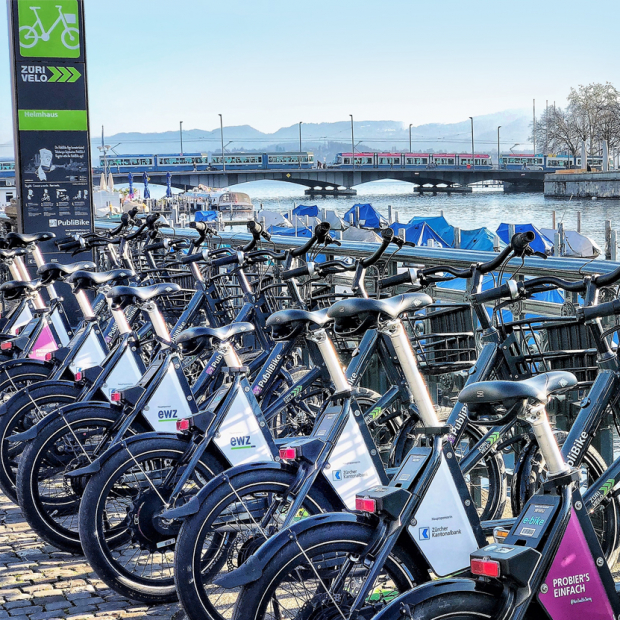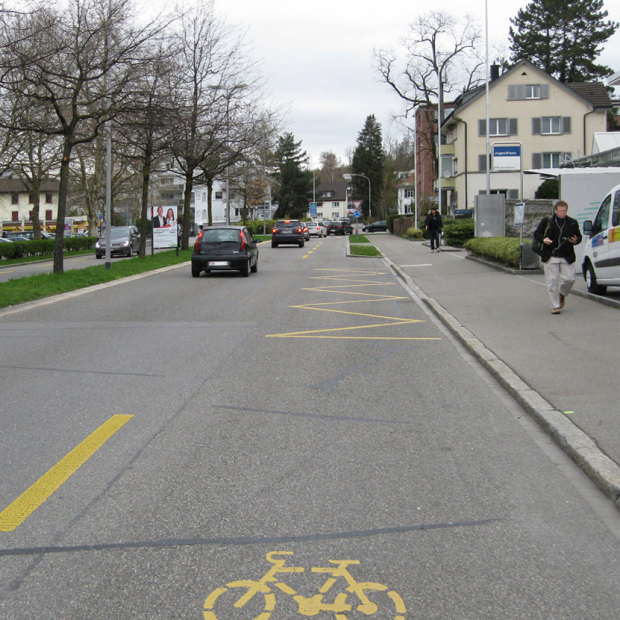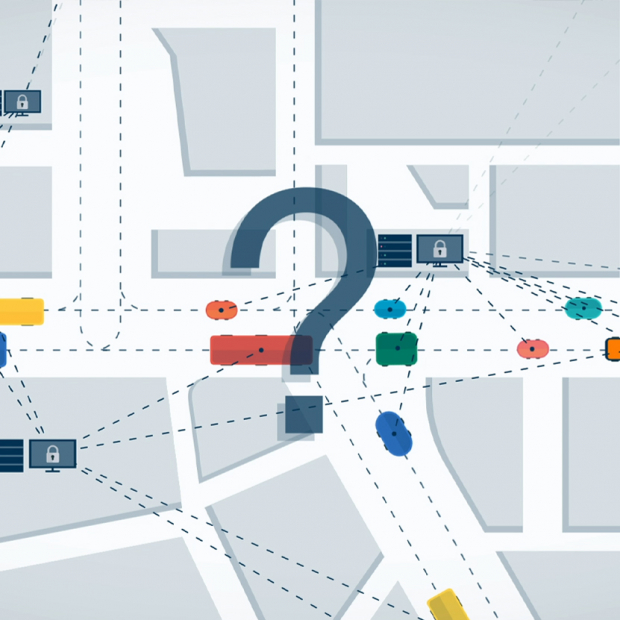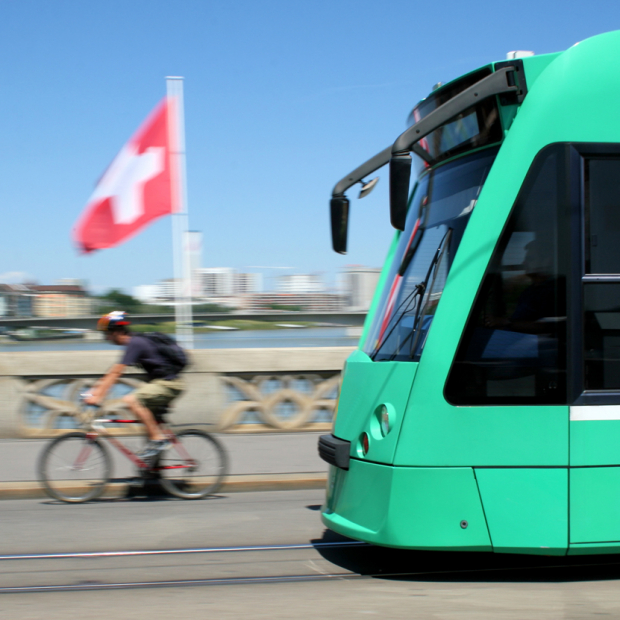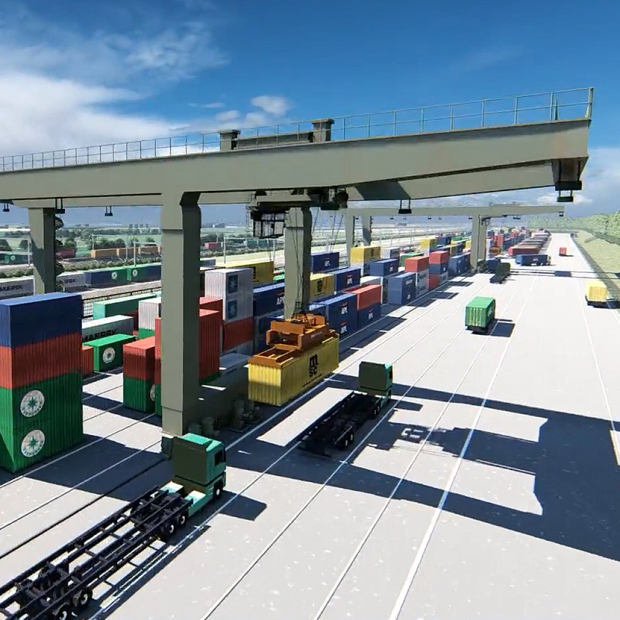
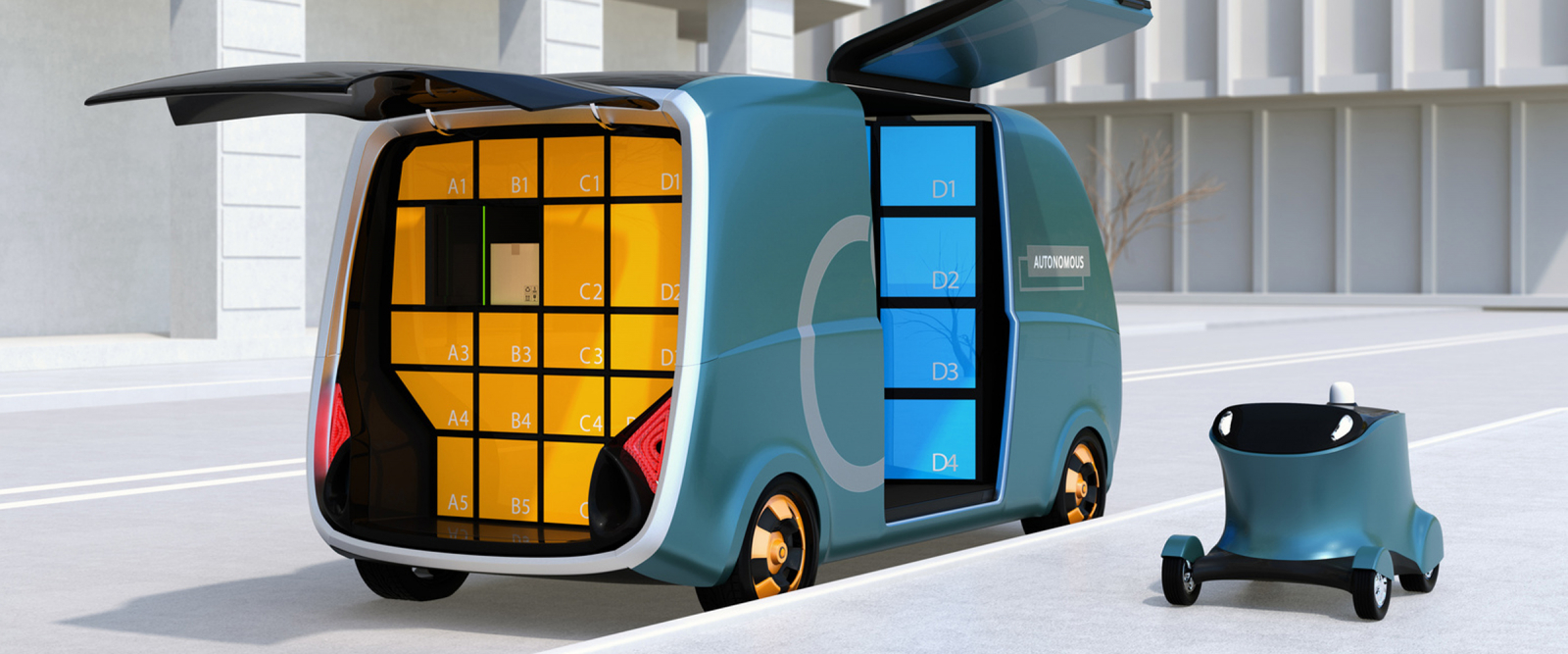
Impact of self-driving vehicles on freight transportation and city logistics
Automated driving technology has the potential to fundamentally change our transportation systems. Working together with BaslerFonds and numerous other partners, we carried out an earlier study to assess the impact of self-driving vehicles on our transportation system, our transportation behavior, our infrastructure needs and our approach to spatial development. In a follow-up study, EBP now takes a closer look at the extent to which automated driving technology can be expected to spur new developments in the areas of freight transportation and city logistics.
The urgency of smart solutions in the area of city logistics has grown along with general increases in traffic volume and the expanding role of delivery services as more and more consumers turn to the internet to make their purchases. One promising approach to unburdening our city streets of freight transportation would be to introduce more efficient ways of managing the flow of vehicles and goods, for instance, by ensuring vehicles are loaded on both departure and return trips and providing for the establishment of new types of logistics centers on the periphery of cities and city centers.
The impact of self-driving vehicles on freight transportation
The introduction of self-driving vehicles is likely to amplify the trend toward heavy traffic, and thereby increase the urgency of innovative freight-transportation solutions. This introduces new opportunities for the driverless delivery of goods and a recalibration of roles and interfaces relating to the loading, transport and unloading of goods.
Scope of the follow-up study
The scope of our study results includes an account of existing forms of automated or self-driving freight-transportation vehicles, as well as test-phase applications in road-based freight and commercial transportation. In addition to this, we have also documented examples of special systems such as delivery robots and drones.
After analyzing the factors that influence the formation of transport chains, we go on to derive the impact self-driving vehicles can be expected to have on the relevant organizational and operational concepts and physical features such as facilities and processing equipment. Using this as a basis, we then undertake a qualitative assessment of the impact of automated freight vehicles in Switzerland.
Main findings
Our main findings include the following:
- Platooning and autopilot can be of particular interest in international traffic.

- The use of driverless freight vehicles for full truckload (FTL) and less-than truckload (LTL) shipment (e.g. B2B) is conceivable. In such cases, the handling can either be performed automatically or by the receiver. The more complex the delivery (number of locations, infrastructure, etc.), the more likely it is that people will accompany the processes, i.e. a driver/handler will remain on board the vehicle.

- Automated driving technology introduces the possibility of having vehicles circulate on empty runs. In the area of freight transportation, this technology can be used to have parcels and small delivery items picked up by driverless vehicles. As a result, the «last mile» in the delivery chain would tend to be less efficient, with more trips overall. As a countermeasure, we propose dense networks of parcel boxes in urban spaces. These could either be evenly distributed and fixed-type installations or driverless mobile units at various locations.

- The use of delivery robots can be expected to remain limited to special areas. Drone use can be expected to remain limited to special areas even in the long term.

Automated vehicle technology has introduced many new opportunities and can be expected to spur significant change in the area of logistics. Together with simultaneous trends in the area of freight transportation and vehicles in general, automated vehicle technology is likely to increase the variety and complexity of road-transportation models both with respect to personal mobility and freight transportation in Switzerland.
Follow-up studies as a part of a total package
The project was a part of a comprehensive study on the large-scale introduction of automated vehicles. The study gave rise to a preliminary analysis and revealed a need to conduct follow-up studies relating to the following subjects:
- Traffic engineering
- Effects on road safety
- Data and IT infrastructures
- New offerings for shared transportation
- Impact on resources, environment and climate
- Challenges for cities and other urban areas
Study results
We compiled our findings in a synthesis: Large-Scale Introduction of Automated Vehicles – Applications and Effects in Switzerland, Report of September 5, 2018


